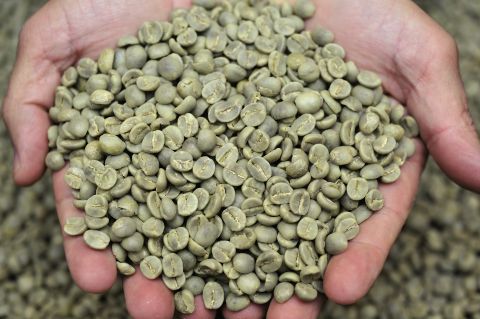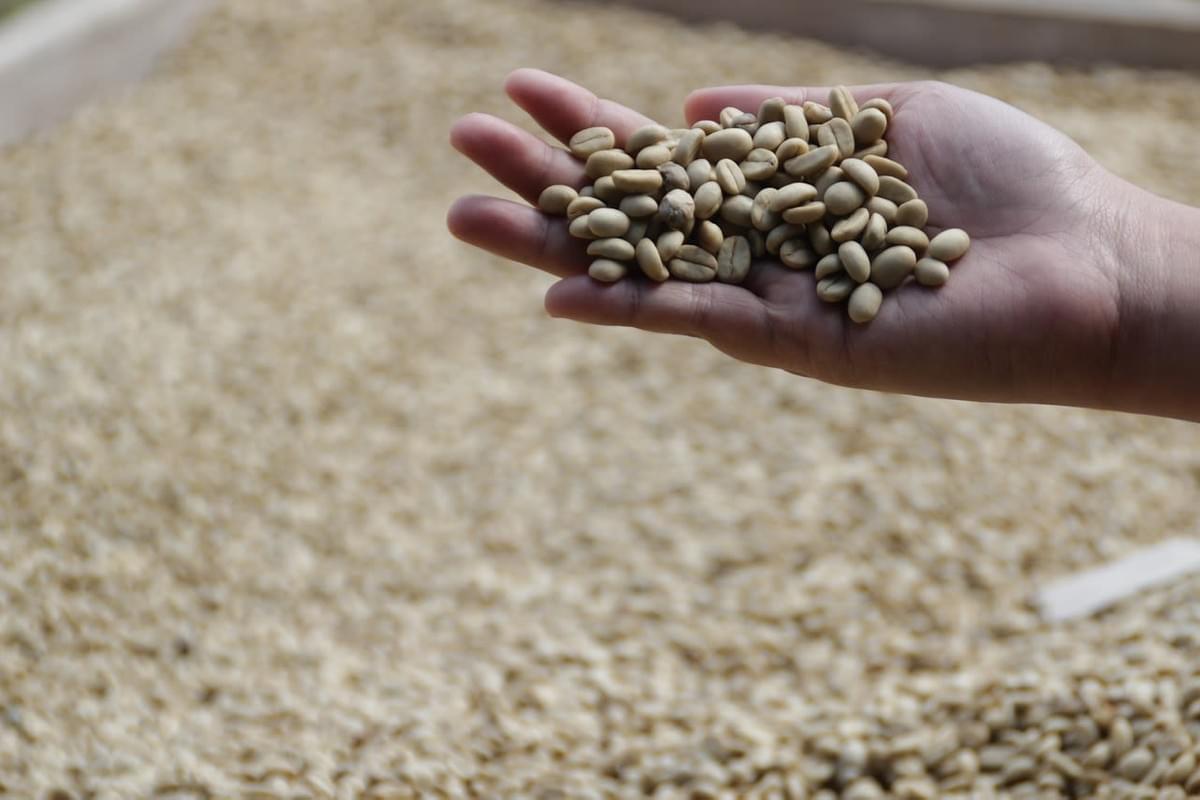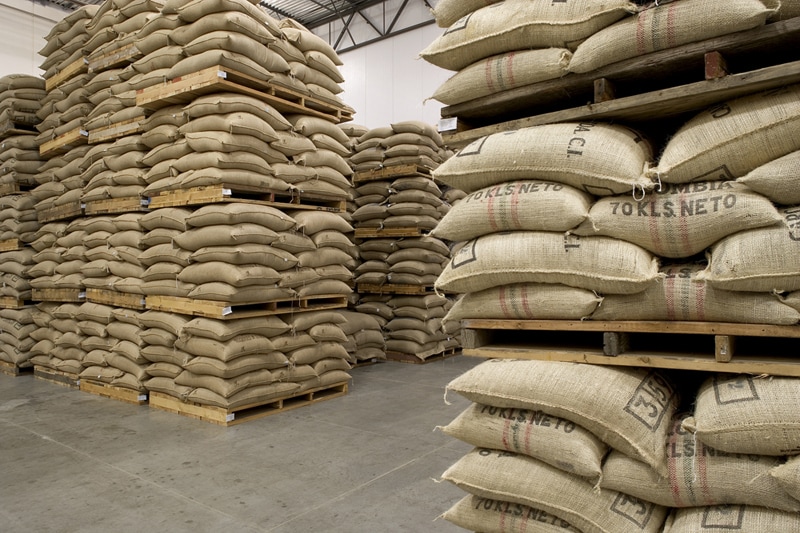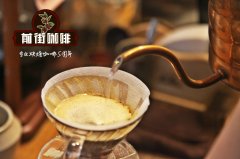Understanding Coffee Raw beans: quality, name, Transportation and Preservation of Raw beans
Professional coffee knowledge exchange more coffee bean information please follow the coffee workshop (Wechat official account cafe_style)
1. The quality of raw beans
When we judge the quality of raw beans, we should not only observe whether they are mixed with defective beans, but also pay attention to the color, luster, water content and so on.

Color-colors vary depending on how they are handled
Washed coffee beans will appear blue-green, but in the process of preservation, the raw beans will gradually turn green or yellow, and the aroma of the coffee will continue to be lost. When the raw beans are produced and treated in the same way, the quality can be distinguished by the color of the beans, but if the raw beans are treated in different ways, the color will be different. Fresh raw beans washed in water will appear blue-green; naturally dried raw beans will appear green. In addition, the color of beans varies from place to place, for example, fresh beans from Central America are mostly blue-green, while beans from East Africa are light green. Although the color of raw beans is one of the ways to judge its quality, it can not be judged only by color, but must be identified in other ways.
Water content-the aroma of raw beans varies according to water content.
When raw beans are exported from places of origin to different countries, their water content is usually maintained at about 12%. When raw beans are placed in the warehouse, their water content and aroma will vary with the seasons. This is because raw beans absorb moisture during the rainy season or summer, but lose moisture in the drier autumn. For example, when coffee beans are sent to the country from Central America from May to June, they are usually harder. However, when it is kept for more than half a year and the climate becomes dry and cold, the moisture in the raw bean will be lost and the flavor will change accordingly, which will lead to the softening of the raw bean and the slight reduction of its sour and aroma.
Luster-unglossy raw beans ≠ poor quality raw beans
The surface of some raw beans will have a layer of wax-like luster, but some of the raw beans have no gloss and are lighter in color. Tin card raw beans from Panama, Colombia and Hawaii show beautiful luster after washing, while naturally dried raw beans are less glossy. Although the glossy raw beans are more beautiful than the dull ones, the luster does not affect the aroma of the raw beans.
two。 The name of the raw bean
Raw beans are named after the harvest year to distinguish between different batches of coffee.
New beans-beans harvested in the year
New beans refer to the raw beans harvested that year. The harvest period of coffee beans often spans two years. For example, we will use 09-10 to indicate the beans of that year. 09-10 refers to the raw beans harvested between 2009 and 2010, which are called new beans before the 10-11 raw beans are harvested. New beans are rich in chlorogenic acid and sugar, which can improve the flavor and aroma of coffee and taste fresh. Dried raw beans have grass aroma, but in the process of static, the aroma will become lighter due to the change of enzymes and become more stable. The raw beans in this state are called new beans (New Crop).
Beans in season-beans harvested in off-season
Although the seasonal beans are also the raw beans of 2009-10, they usually refer to the off-season raw beans before the next raw beans are purchased, or the inventory beans before the next coffee harvest. The quality of seasonal beans will be affected by preservation, and raw beans without proper drying are more likely to produce hay flavor.
Old beans-beans harvested the year before
Old beans refer to the raw beans harvested in the previous year, if the raw beans in 09-10 are called new beans, and the beans harvested in 2008-09 are old beans. The quality of old beans varies according to their preservation, but most of them have been seen to have chemical changes. When Shengdou becomes old beans, the sour taste of beans will begin to disappear within a year or so at the latest, and the aroma will become lighter and even produce the smell of withered grass. Usually, the freshness of raw beans will be low one year after harvest, and various chemical changes begin to take place, and this kind of beans is called old beans.

⊕ beans-will beans have the best aroma?
Of course, there are also people who love beans for many years, but if you want to understand the original aroma of coffee, you still recommend new beans.
The so-called multi-year beans refer to raw beans that have been harvested for more than 2 years. If the raw beans in 09-10 are called new beans, the beans harvested before 07-08 will be called multi-year beans. Because its organic acid and other substances have been reduced, it is known as beans for many years.
Year-old beans are not suitable for sale because most of their organic matter has been lost and has a bad smell such as hay or straw, and even the smell of rotten wood as the storage time increases. The aroma of coffee comes from organic acids and other substances. After long-term storage of raw beans, the organic acids will be reduced and the aroma will disappear day by day. In order to avoid the above situation, people will control the humidity and temperature of the storage environment, and this kind of managed beans for many years is called aged beans. In the past, due to the poor efficiency of baking boilers, stores usually did not sell hard Guatemalan and Colombian coffee beans, but sold aged beans instead, resulting in many fans of aged beans. But after 2000, with the increasing demand for household coffee beans, coffee bean stores have been set up, so people can directly understand the advantages of new beans, and then pursue more unique coffee beans. The unique smell of raw beans varies from place to place, as well as the aroma of new beans, will be intertwined with the most charming flavor.
3. Transportation and preservation
Most of the coffee will be exported to various countries according to the ship, so we should pay attention to the temperature change of raw beans when transporting.
When raw beans are exported from the origin, the use of air will increase the freight, so they are usually transported by vessels. It takes about a month for raw beans imported from Central and South America or Africa to arrive. Before importing coffee beans, we usually ask the origin to airlift a small number of samples. If we pass the cup test, the exporters will load the coffee beans into normal temperature containers and ship them everywhere. During transportation, the temperature of the container will rise near the equator, so the raw beans will be damaged more or less. In addition, the port equipment and processing capacity of countries such as Tanzania are poor, coupled with the high altitude and dry climate of the producing area, but the port is a hot and humid area, so it is easy to affect the quality of raw beans. In order to avoid damage to the quality of raw beans, the following methods can be used for export:

Cryogenic container
If raw beans are transported in cryogenic containers (refrigerated containers), the damage will be less than those using normal temperature containers. In addition, raw beans can also be maintained in the state at the time of export.
Cryogenic storage
Due to high temperature and humidity in summer, but quite dry in winter, it is not suitable for storing raw beans. Therefore, the raw beans must be stored in a constant temperature storage, and the temperature is set at 15 ℃ in summer. The freshness of raw beans stored in constant temperature storage will be better than those stored at room temperature.
Packing method-sackcloth bag
Coffee sacks have three layers of structure, including a layer of plastic cloth with a little air. But when we pack the beans, we will first put the beans into a general sack, and then put them into a coffee sack to prevent the raw beans from leaking out when the bag is damaged. Coffee sacks can block the outside air and are suitable for more stringent transportation conditions.
Packing mode-vacuum bag
In the past two or three years, more and more exporters use vacuum packaging to completely block the air when transporting coffee. DATERRA Manor in Brazil took the lead in using vacuum aluminum foil bags to pack raw beans a few years ago, and then put them into cartons for export, which is the founder of vacuum packaging for coffee.
The essentials for the preservation of raw coffee beans
Although raw beans can be preserved for a long time (unlike cooked beans, which usually lose flavor more than ten days after roasting), the good flavor hidden in raw beans will be lost bit by bit as time goes by. Over the years, how to prolong or maintain the good quality of raw beans has always been an important issue for coffee lovers and people in the industry. Many foreign experts and coffee groups have studied this issue and published a large number of research results.
The conclusion is quite simple: the ideal storage should be to keep raw beans in an environment that avoids exposure to gas and odors, slows down absorption and prevents oxygen from entering the beans. In other words, it is the best known way to pack it in a vacuum bag and then put it in the freezer.
However, the problem is that vacuum freezing requires space and electricity. Maintaining this state for a long time is not a small expense, and not everyone can afford it or is willing to afford it. For example, in the domestic coffee industry, there are only a few freezers for storing raw beans, and even they are only willing to vacuum freeze expensive high-end beans, while ordinary-priced raw beans are still stored in the traditional way.
If you have vacuum frozen coffee beans, remember one thing: get the beans back to room temperature before sending them to the baking machine. it's easy to move the beans out of the freezer the day before.
Reference: an introduction to Coffee textbook by Junying Horikou
END
Important Notice :
前街咖啡 FrontStreet Coffee has moved to new addredd:
FrontStreet Coffee Address: 315,Donghua East Road,GuangZhou
Tel:020 38364473
- Prev

Introduction of Alida Manor, the victorious army of B.O.P (Best of Panama)
Professional coffee knowledge exchange more coffee bean information please follow the coffee workshop (Wechat official account cafe_style) Alida Manor (Elida Estate) the victorious army of B.O.P (Best of Panama) in recent years, in 2018 also entered the B.O.P, and won a number of rankings, and in 2017 won the B.O.P championship, setting an unsurpassed 94.15 points. Alida Manor owns
- Next

Introduction of Coffee Flavor of Saint Vincent processing Plant in Honduras
Professional coffee knowledge exchange more coffee bean information please follow the coffee workshop (Wechat official account cafe_style) St. Vincent processing plant (Beneficio San Vicente) one of the ancient classic processing plants in Honduras ~ St. Vincent (San Vicente) is a family-run processing plant, very famous locally, St. Vincent processing plant for the gatekeeper, so that the quality of coffee beans more improved! Make a living
Related
- Does Rose Summer choose Blue, Green or Red? Detailed explanation of Rose Summer Coffee plots and Classification in Panamanian Jade Manor
- What is the difference between the origin, producing area, processing plant, cooperative and manor of coffee beans?
- How fine does the espresso powder fit? how to grind the espresso?
- Sca coffee roasting degree color card coffee roasting degree 8 roasting color values what do you mean?
- The practice of lattes: how to make lattes at home
- Introduction to Indonesian Fine Coffee beans-- Java Coffee producing area of Indonesian Arabica Coffee
- How much will the flavor of light and medium roasted rose summer be expressed? What baking level is rose summer suitable for?
- Introduction to the characteristics of washing, sun-drying or wet-planing coffee commonly used in Mantenin, Indonesia
- Price characteristics of Arabica Coffee Bean Starbucks introduction to Manning Coffee Bean Taste producing area Variety Manor
- What is the authentic Yega flavor? What are the flavor characteristics of the really excellent Yejasuffi coffee beans?

